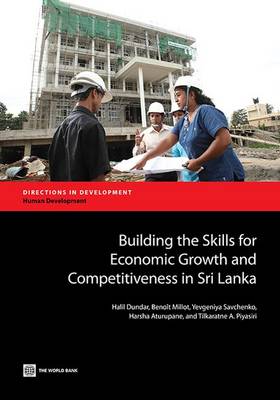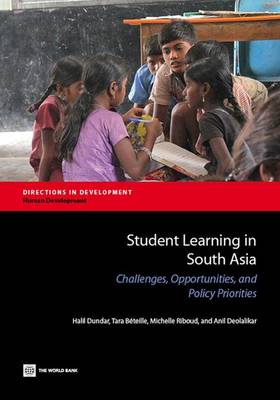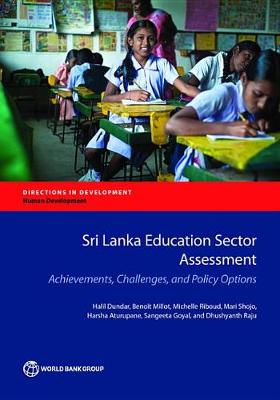Directions in development
3 total works
Building the skills for economic growth and competitiveness in Sri Lanka
by Halil Dundar
Published 29 May 2014
Despite armed internal conflict and the global financial crisis, Sri Lanka has made remarkable progress in recent years, enjoying healthy economic growth and substantially reducing poverty. Moreover, Sri Lankans are the best-educated people in South Asia, with widespread access and high completion rates in primary and secondary education. Economic growth and structural changes in the economy, however, make skills development imperative as Sri Lanka implements its plan - the Mahinda Chintana (MC) - to become a regional hub in strategic economic areas. Yet skills shortages and mismatches are widespread, and firms with undereducated employees and a shortage of skilled labour are less productive. An effective skills development system will help diversify the economy; improve labour productivity and competitiveness; give the country the flexibility it needs to compete effectively in the global economy; and further reduce poverty. As Sri Lanka moves from a factor-driven to an efficiency-driven economy, its workforce is shrinking even as demand for skills - especially sophisticated skills - is rising. Unfortunately, Sri Lanka has been slow to expand technical and vocational education and training (TVET) and tertiary education. Responsibility for TVET is fragmented; the system is supply-driven; there is a shortage of reliable information on labour market skills demand and supply; employers are sidelined; and the resources invested are not linked to performance. The MC recognises the severity of the skills constraint and highlights the importance of investing in workforce skills to raise both productivity and competitiveness. This report analyses skills demand and supply in Sri Lanka and scrutinises how skills are formed, the factors shaping skills demand, and the responsiveness of the system. Finally, it offers suggestions for how skills development can be improved so that Sri Lanka can meet its economic growth and poverty reduction goals.
For the past decade, most South Asian countries have directed their efforts towards achieving universal access to elementary education. While these investments have led to more children being retained in school, they have not translated into better learning outcomes. This report comprehensively analyses the performance of South Asian educational systems in terms of student learning. It attempts to answer three questions: (i) How well do education systems in South Asia perform?; (ii) What determines student learning outcomes?; (iii) What policy options are effective in improving learning outcomes, especially given increasing demand and competition for public resources?Because learning outcomes and skill acquisition in the region are low in both absolute and relative terms, schooling does not translate, as it should, into better life chances, including escape from poverty for many more. Nor does schooling contribute to higher productivity and economic growth, so that countries in the region find it difficult to accelerate economic and social development. Governments in the region now fully realise that they need to direct their attention toward improving quality so that students can aspire to fuller lives as both individuals and labour market participants. Merely spending time in school is not enough; students need to register a significant gain in both noncognitive and cognitive skills if countries in the region are to reap full returns on their investments and generate gains in employment, job creation, and productivity. To examine what policies hold promise for improving student learning, the report reviews evidence from large-scale national learning assessments and findings from impact evaluations being conducted in the region. It identifies the following strategic priorities for improving learning outcomes in South Asia: (1) Make learning outcomes the central goal of education policy; (2) Invest in early childhood nutrition; (3) Improve teacher effectiveness and accountability; (4) Provide additional support to disadvantaged children in early grades; (5) Use financing effectively; (6) Leverage the contribution of the non-state sector; and (7) Build learning assessment systems. Each of these policy options will need to be integrated within a larger agenda of inclusive economic growth and governance reform to be truly effective.


